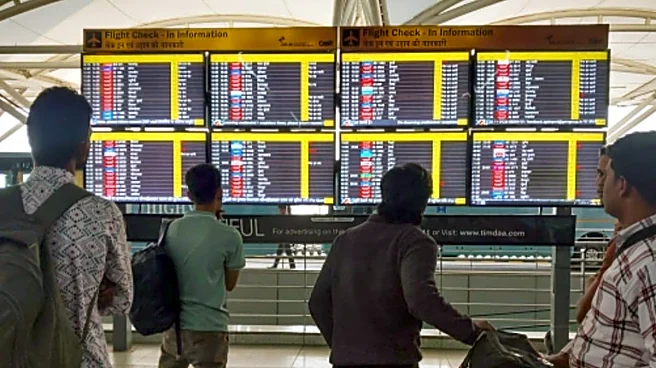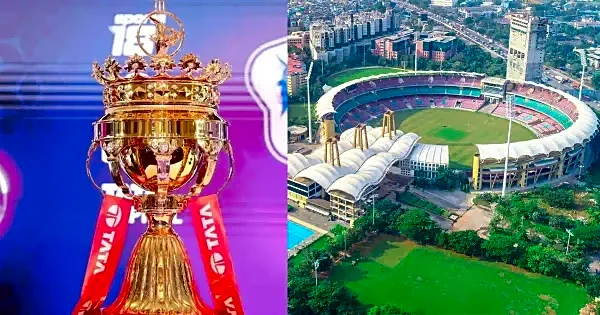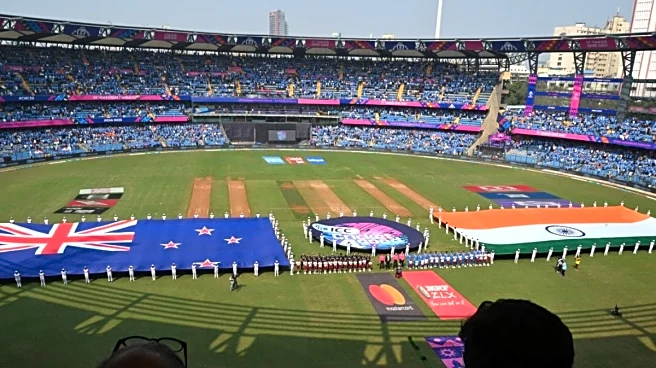As the winter holiday season takes off, so do flight delays. The departures at Indian airports are already displaying “rescheduled” and “delayed” flights more frequently, and passengers across Delhi, Mumbai,
and Bengaluru are feeling the pinch. While most travellers blame fog or “technical issues” when stuck at the terminal, the reality is far more complicated.
In modern aviation, one late aircraft in the morning can set off a chain reaction that ripples through the entire day, impacting hundreds of flights and thousands of passengers in different parts of the country.
Let us understand how flight delays actually happen, and why even a 10-minute setback in India’s airspace can turn into an all-day headache.
The 6 AM Problem That Haunts The Whole Day
To understand why flights run late, you have to start early at around 5 or 6 am, when the first wave of aircraft begins operations. Every aircraft in an airline’s fleet does not just fly one route a day. A single plane could fly Delhi-Mumbai, then Mumbai-Goa, then Goa-Bengaluru, and finally return to Delhi before midnight.
If that first flight, around 6:10 am departure from Delhi, gets delayed because of fog or congestion, it will arrive late in Mumbai. The same plane now takes off late for Goa, and so on. By noon, the aircraft is running two hours behind its original schedule. By evening, it gets delayed by three or four hours.
This phenomenon is known as the “cascading delay” or “domino effect.” Airlines try to plan tight schedules to maximise efficiency, but when a single sector goes off track, the entire chain collapses.
At Delhi and Mumbai airports, where air traffic begins before sunrise and stays heavy until midnight, there is little room to reset the clock. A 30-minute delay in the morning rarely stays just 30 minutes — it snowballs into multiple hours by nightfall.
Why Is Air Traffic Control Always Busy?
Another major reason why delays stretch endlessly is the sheer volume of flights India’s busiest airports handle. Delhi and Mumbai are among the world’s most congested airspaces, often running at or above their optimal capacity.
The Air Traffic Control (ATC) manages every landing, take-off, and taxi movement, and when too many aircraft are lined up during peak hours, ATC has to slow down the rate of clearances. That means even if your plane is ready for take-off, it may have to wait for a slot to open up.
Think of it as a traffic jam, but in the sky. During the morning and evening peaks, when both domestic and international departures are packed together, aircraft often queue up for up to 30 minutes before the take-off clearance. With fog or reduced visibility, that window stretches further.
This congestion is not limited to just Delhi or Mumbai. Bengaluru and Hyderabad, which are the new aviation hubs, are seeing similar patterns as passenger volumes grow faster than infrastructure expansion. ATC controllers are managing increasingly complex traffic patterns with limited spacing, making even a minor delay at one end ripple through multiple destinations.
When The Weather Turns Against You
Winter fog in North India is one of the most persistent culprits in flight delays. Between December and February, dense fog often reduces visibility to a few metres in Delhi, Lucknow, Varanasi, and Amritsar.
While modern airports have CAT III landing systems that allow aircraft to land in low visibility, the process still takes longer. Not all aircraft and pilots are certified for it, so some planes must wait until conditions improve.
Weather disruptions don’t stop with fog. Sudden rain in Bengaluru or crosswinds along the coastal runways of Chennai and Goa often force aircraft into holding patterns — circular paths flown while waiting for clearance to land. Every extra minute in the air burns fuel and squeezes the plane’s next departure window.
Once again, the domino effect kicks in: a plane stuck in holding over Bengaluru might land 25 minutes late, delay boarding for the next sector, and start a fresh cascade of delays elsewhere.
How Turnarounds Affect Efficiency
The business model of India’s low-cost carriers is built on quick turnarounds — the time taken to clean, refuel, board passengers, and push back for the next flight. For airlines like IndiGo, SpiceJet, and Akasa Air, this window is often as short as 25-30 minutes.
That means there is almost no buffer. If a flight arrives 15 minutes late and boarding takes five minutes longer, it is already behind schedule for its next leg. Multiply that by three or four flights a day, and by evening, that aircraft could be running an hour or more behind.
Airlines in other regions often schedule small buffer periods — 10 or 15 minutes of “hidden” ground time to absorb delays. But in India, where high utilisation keeps ticket prices competitive, airlines prefer to pack their schedules tightly. The trade-off is predictability: one delay early in the day becomes inescapable.
How Crew Duty Hours Are A Constraint
Pilots and cabin crew are legally bound by duty-hour limits set by aviation regulators to prevent fatigue. Once a crew reaches its maximum duty time, they cannot legally continue operating flights.
When delays stretch, this rule can trigger an unexpected second layer of disruption. For instance, if a flight that was supposed to land in Delhi at 9 pm gets delayed to 10:30 pm, the same crew might “time out”, exceeding their allowed duty hours. The airline then has to find a replacement crew.
During busy seasons, especially in December and January, replacement crews are often unavailable or assigned elsewhere. That means flights can sit grounded even after passengers have boarded, waiting for a fresh cockpit team.
In a system already stretched thin, this adds hours to recovery times and compounds the cascading effect.
How One Delay Ripples Across India
The real impact of a delay is not limited to the airport where it starts. As aircraft and crews are constantly rotating between cities, one delay in the morning can disrupt multiple routes across the country by afternoon.
For instance, if a 6 am fog delay in Delhi holds up an aircraft for an hour, its next leg to Jaipur departs late. The same aircraft’s subsequent flight from Jaipur to Pune is also delayed, and passengers connecting from Pune to Goa face missed connections.
By evening, airports that had clear weather, such as Chennai or Kochi, can still experience ripple effects from morning fog in Delhi. Airlines often reshuffle aircraft to balance the chaos, which means even flights that started on time may later face last-minute cancellations or gate changes.
This cascading disruption explains why passengers in South India or the West Coast frequently find their flights delayed “due to fog in Delhi”, even though the skies above them are clear.
Last Thursday, the glitch in India delayed about 25 flight departures and more than 175 on Friday at Delhi airport, according to Reuters. Delhi airport handles 60-70 aircraft movements per hour. Data from Flightradar24 showed the average departure delay was 60 minutes on Friday evening.
The malfunction in the Automatic Message Switching System (AMSS), used to generate flight plans, forced controllers to develop them manually, leading to delays, the Airport Authority of India (AAI) said. Malfunction also hit several international airlines, with an ITA Airways flight to Rome delayed by nearly two hours and a Virgin Atlantic flight to London by more than an hour.
What It Means For Passengers
For Indian travellers, especially those flying during the winter holidays, the consequences of these delays go far beyond an inconvenience.
Missed connections are increasingly common, especially for passengers catching international flights from Delhi or Mumbai. A one-hour delay on a domestic leg can make travellers miss onward flights to Dubai, London, or Singapore — leading to rebooking chaos and added expenses.
Then there is the time spent waiting. Aircraft caught in holding patterns burn more fuel, so airlines often prefer to hold passengers on board rather than deboard them. That means longer waits on the tarmac or at crowded gates.
Baggage mishandling also increases during such disruptions. When multiple flights get rescheduled or swapped, luggage routing errors rise sharply, leaving passengers waiting hours or even days for missing bags.
For families travelling during the holidays, the stress multiplies. Tight itineraries — weddings, vacations, work commitments — fall apart quickly in the face of cascading delays.
Why Airlines Don’t Build Bigger Buffers
If the problem is clear, why don’t airlines just plan for more buffer time? The answer lies in economics.
Every extra minute an aircraft spends on the ground costs money. Parking fees, crew pay, and lower utilisation all add up. For low-cost carriers, which dominate Indian aviation, keeping planes in the air as much as possible is essential to maintaining profitability and low fares.
The downside? Less flexibility when things go wrong. With near-zero slack, the entire system operates on a knife-edge.
Moreover, India’s airport infrastructure, which is still expanding, lags behind passenger growth. Terminal congestion, limited taxiways, and slot scarcity at major hubs make it nearly impossible to create large schedule cushions without reducing the total number of flights.
Why Does Winter Make It Worse?
Winter amplifies every weakness in the system. Fog in the north, increased passenger loads due to holidays, and narrow runway slots create a perfect storm.
In recent years, domestic air travel demand in India has skyrocketed — crossing pre-pandemic levels. The total air traffic for the April-July 2025 period was roughly 96.54 million passengers, a 4% increase compared to the same period last year, according to the India Brand Equity Foundation. While domestic traffic grew by 3.4%, international traffic saw a more robust increase of 6.6%. The overall growth for the fiscal year 2026 is projected to be between 5-7%
But infrastructure has not kept pace. The same runways and ATC staff now handle far more flights per day. Add weather delays and tight schedules, and the system’s fragility becomes painfully visible.
That is why delays in December and January often start earlier in the morning, last longer through the day, and spread wider across cities.
Can It Be Fixed?
There are no quick fixes, but aviation experts say a mix of policy and technology could help reduce cascading delays.
Airports are gradually introducing AI-based air traffic flow management systems that can predict congestion and optimise landing/take-off slots. Airlines are being urged to plan slightly wider turnarounds and maintain “reserve aircraft” to absorb shocks during winter.
Better coordination between airlines, airports, and weather forecasters can also help. Real-time visibility data sharing could allow for more efficient rerouting of aircraft during fog.
And on a larger scale, building new runways and secondary airports such as Navi Mumbai or Noida International Airport will gradually ease the burden on saturated hubs like Mumbai and Delhi.
What To Conclude?
Flight delays are not just about weather or bad luck — they show how tightly India’s aviation ecosystem is wound. One late aircraft in the morning can set off a chain reaction that reaches across the country by evening.
As India’s skies get busier each year, the system’s resilience will depend on how well technology, infrastructure, and scheduling evolve.
So, if your flight gets delayed, remember, it is not just you waiting. But an entire network, which is trying to recover from the ripple effects of one early-morning fog.






/images/ppid_a911dc6a-image-176276242854317596.webp)




/images/ppid_59c68470-image-176267003922921072.webp)


